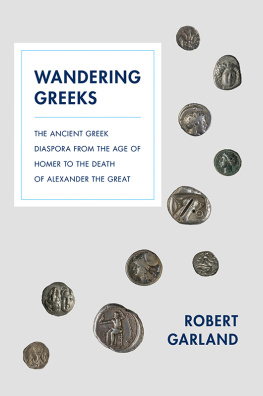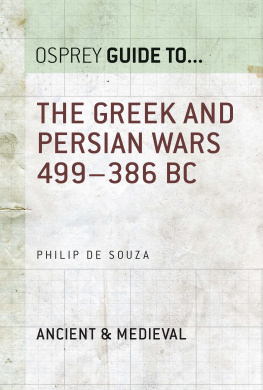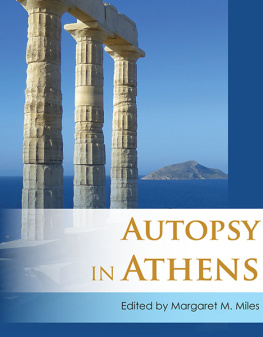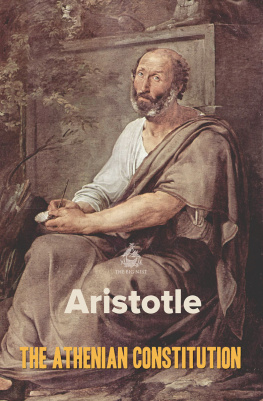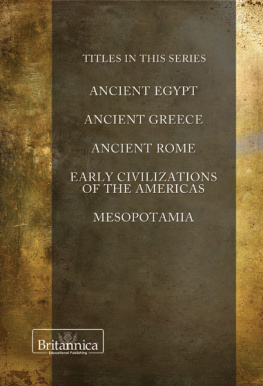ATHENS BURNING
WITNESS TO ANCIENT HISTORY
G REGORY S. A LDRETE , Series Editor
A LSO IN THE S ERIES
Jerry Toner, The Day Commodus Killed a Rhino: Understanding the Roman Games
Debra Hamel, The Battle of Arginusae: Victory at Sea and Its Tragic Aftermath in the Final Years of the Peloponnesian War
ATHENS BURNING

The Persian Invasion of Greece and the Evacuation of Attica
Robert Garland
COLGATE UNIVERSITY
Johns Hopkins University Press
Baltimore
2017 Johns Hopkins University Press
All rights reserved. Published 2017
Printed in the United States of America on acid-free paper
2 4 6 8 9 7 5 3 1
Johns Hopkins University Press
2715 North Charles Street
Baltimore, Maryland 21218-4363
www.press.jhu.edu
Library of Congress Cataloging-in-Publication Data
Names: Garland, Robert, 1947, author.
Title: Athens Burning : the Persian invasion of Greece and the evacuation of Attica / Robert Garland.
Description: Baltimore : Johns Hopkins University Press, 2017. | Series: Witness to ancient history | Includes bibliographical references and index.
Identifiers: LCCN 2016022026| ISBN 9781421421957 (hardcover : alk. paper) | ISBN 142142195X (hardcover : alk. paper) | ISBN 9781421421964 (pbk. : alk. paper) | ISBN 1421421968 (pbk. : alk. paper) | ISBN 9781421421971 (electronic) | ISBN 1421421976 (electronic)
Subjects: LCSH: Athens (Greece)HistorySiege, 480 B.C. | GreeceHistoryPersian Wars, 500-449 B.C.Social aspects. | Civilians in warGreeceAthensHistoryTo 1500. | GreeceHistoryPersian Wars, 500-449 B.C.Campaigns.
Classification: LCC DF225.55 .G37 2017 | DDC 938/.03dc23
LC record available at https://lccn.loc.gov/2016022026
A catalog record for this book is available from the British Library.
Special discounts are available for bulk purchases of this book. For more information, please contact Special Sales at 410 -- 6936 or specialsales@press.jhu.edu.
Johns Hopkins University Press uses environmentally friendly book materials, including recycled text paper that is composed of at least 30 percent post-consumer waste, whenever possible.
For Richard and Danielle with love
Une m me vague par le monde, une m me vague depuis Troie roule sa hanche jusqu nous.
Saint-John Perse
I hope they will not forget the poor devils that died here.
Sapper Harry Billinge on the seventy-year commemoration of D-Day (June 6, 2014)
CONTENTS
ILLUSTRATIONS
FIGURES
MAPS
TIMELINE
|
Winter | Following the Persian defeat at Marathon, Darius I gives orders to make preparations for another expedition. |
|
September/October | The accession of Xerxes I follows the death of Darius I. |
|
By the end of the year | Xerxes crushes revolts in Egypt and Babylon. |
|
Summer | On Themistocles recommendation, the Athenians devote the silver accruing from their silver mines at Laurium to building a fleet of two hundred triremes. Xerxes begins preparations for an invasion of Greece; his engineers start digging a canal though the neck of the peninsula at Mount Athos. |
|
April/May | Xerxes sets out from Susa. |
September/October | Xerxes arrives in Sardis. He sends envoys to Greece demanding submission. At least thirty-one Greek states meet at Sparta and form an alliance to resist the Persians. The Athenians consult the Delphic Oracle. They vote to abandon Attica and resist the Persians at sea. |
October/November or later | The Athenians pass the Decree of Themistocles and begin an orderly evacuation. |
|
April | Xerxes marches from Sardis with his army. |
May | Xerxes crosses the Hellespont. The Greeks march north to the Vale of Tempe but withdraw to the Isthmus of Corinth soon afterward. |
Early summer | The Athenian fleet of two hundred triremes is ready. |
End of August | The battles of Thermopylae and Artemisium are fought. |
End of August / early September | The Athenians conduct an emergency evacuation from Attica. |
Early September | The Persian advance guard enters Attica. |
Mid- to late September | The Persian army enters Athens. The Persian fleet moors at Phaleron. Shortly afterward the Acropolis falls. Xerxes sets fire to Athens. The Peloponnesian army marches to the Isthmus of Corinth. Work begins on building a wall across the isthmus. The Battle of Salamis is fought. |
Early October | The Persian navy sets sail from Phaleron and begins its voyage back to the Hellespont. The Athenian navy sets off in pursuit. A day or two later Xerxes begins his march back to Persia. Soon afterward the Athenian evacuees begin returning from Salamis. |
|
February | Themistocles fails to be elected to the board of generals for the year July 479June 478. |
March/April | Mardonius sends Alexander of Macedon to Salamis to propose peace terms with the Athenians. |
May | The Athenians undertake a second evacuation from Attica. |
Late June | Mardonius invades Attica. He sends a Greek, Mourychides, across to Salamis with an offer of peace terms. After the Athenians reject the offer, Mardonius sets fire to the city. |
July | Mardonius departs from Attica. |
August | The Battle of Plataea is fought. |
Prologue
IF YOU WALK from Syntagma Square, where the Greek parliament building stands, down modern Odhos Hermou as the road passes through the industrial district on the west side of Athens, you will eventually come to the chief burial ground of the ancient city. The Ceramicus, or Potters District, as it is called, lies just outside the circuit wall, which is pierced at this point by two
The wall was built largely out of debris resulting from the double burning of Athens in 480 and 479. From the exposed section of the wall beside the two city gates, you can still today identify many fragments of funerary monuments that the Athenians utilized in its construction. This recycling of high-quality sculpture is indicative of the unsentimental, no-nonsense policy that the Athenians adopted at the end of a war that had seen their city burned not once but twice within a single year. The determination to preserve their freedom at all costs outweighed any other consideration, and for this reason everyone shared in the labormen, women, and children alike. In my view, it is one of the greatest community building projects ever undertaken and, once completed, it set Athens firmly on the path to full democracy.
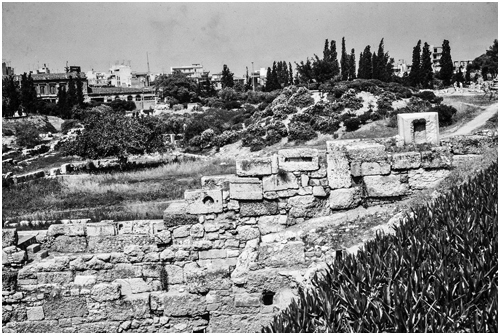
The Themistoclean Wall
This book takes its inspiration from the sufferings of those tens of thousands of Athenian refugees who chose to abandon their homes, their ancestral tombs, and their shrines, without any certainty they would ever return. It was a fate that millions have repeated throughout history. Women and children were sent to one safe haven, the elderly to another, while the men of military age were conscripted into the fleet.
Next page


